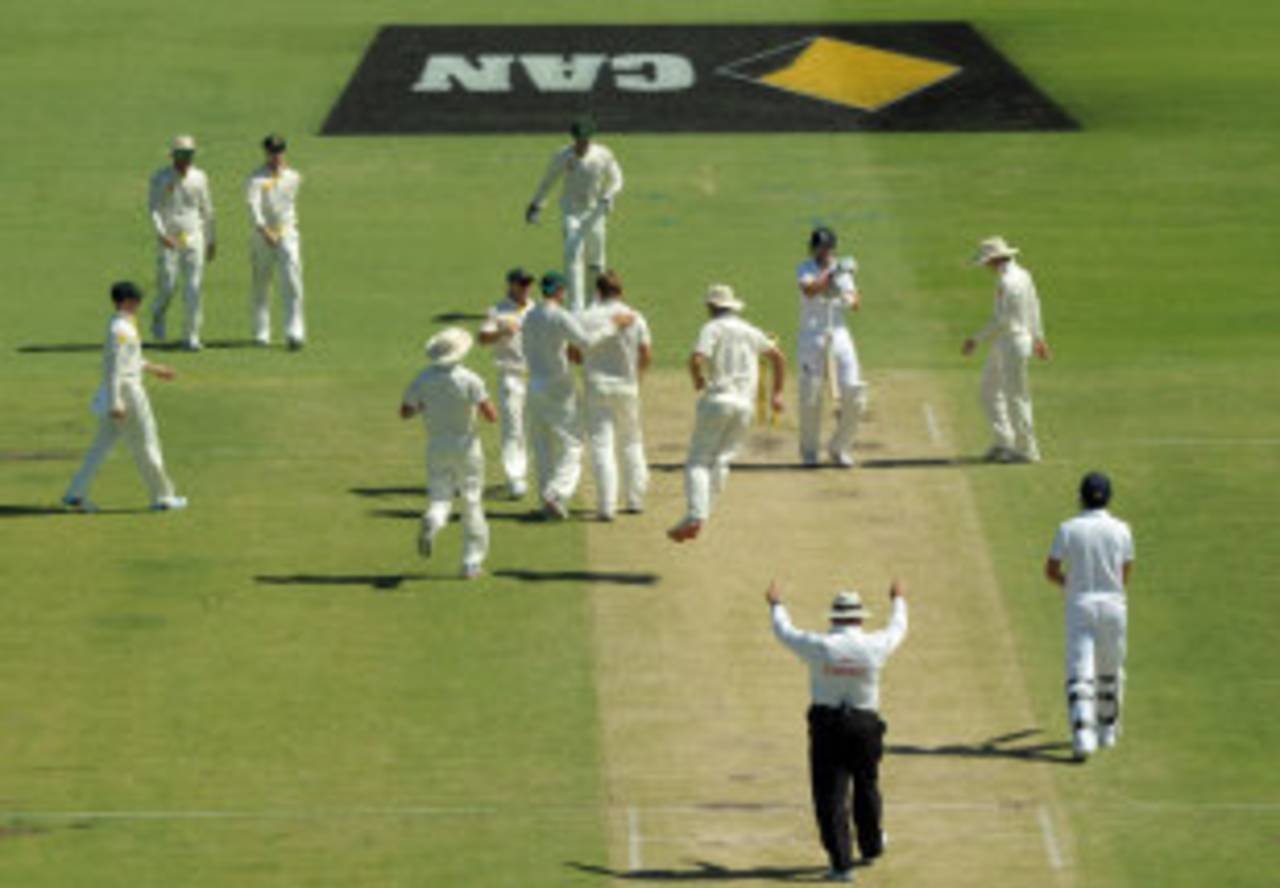England baffled by Root's DRS dismissal
England were left mystified by a third-umpire call that sent Joe Root on his way on the second day at the WACA, but the decision appeared to have been in line with the pre-series instructions to the umpires
Brydon Coverdale in Perth
14-Dec-2013

Joe Root's review was turned down by the third umpire based on the sound from Real Time Snicko • PA Photos
England were left mystified by a third-umpire call that sent Joe Root on his way on the second day at the WACA, but the decision appeared to have been in line with the pre-series instructions to the umpires. The officials were told before the Ashes that sounds detected on the new Real-Time Snickometer could still be an edge even if they appeared to come after the ball had passed the bat, which may have led Tony Hill to uphold the caught-behind decision against Root.
Root was given out by the on-field umpire Marais Erasmus when the Australians appealed for an edge behind off the bowling of Shane Watson and Root immediately asked for a review, shaking his head as if to tell his partner he had not touched the ball. Although there was no Hot Spot on the bat, there was a small noise that registered on the Real-Time Snicko; there was confusion because the sound seemed to show up immediately after the ball had passed the edge.
Hill, the third umpire, upheld the out decision, which left Root flummoxed as he walked off the field, but the outcome seemed to have been in line with a pre-series briefing by the ICC's general manager of cricket Geoff Allardice. In the lead-up to the Gabba Test, Allardice told reporters that where sound showed up on Snicko in the camera frame after the ball had passed the bat, it could still be an edge.
"One of the important things to remember is it's a qualification tool for the umpire about when there is a sound," Allardice said at the time. "He's got to say 'could it have been anything else, was it at the right time'. So one of the things they'll be looking for, the frame immediately after the ball's passed the bat, and if there's a corresponding sound then it says he could have hit the ball. He'll look at the pictures and he'll see is there a gap between bat and ball, could it have been something else and then make a judgement.
"It's more conclusive if there's no sound, if the batsman's out there waving and there's nothing as the ball passes the bat, and there's something a few frames later, that's the situation where he might say 'he's dragged his foot' or something like that."
Third umpires must see or hear clear evidence in order to overturn the decision of the on-field official, and the possibility that the noise had been an edge appeared to lead Hill to err on the side of Erasmus. Root clearly believed he had not hit the ball, but the same could be said of the Australian batsman Steven Smith, who shook his head as he walked off on the second morning after a noise on the Real-Time Snicko convinced Hill to overturn an on-field not-out decision.
"It was a disappointing dismissal for us, and a key dismissal for us," the England batsman Michael Carberry said of Root's caught-behind. "He obviously felt he didn't hit the ball, so he reviewed it. What the decision made by the third umpire was, I'm not fully aware of because I wasn't there. But obviously we were bitterly disappointed ... We were of the opinion he didn't hit it, hence we reviewed it ... the decision [is] made by the third umpire, we don't control that, so it's one of those things we have to swallow I'm afraid."
Real-Time Snicko is being tested in this Ashes series for the first time as part of the third umpire's DRS technologies after the ICC monitored the tool during the English summer and felt it could be used in conjunction with Hot Spot. The ICC's umpire performance and training manager, Simon Taufel, briefed both the England and Australia teams on the new technology before the series, including on the interpretations that would be used by umpires.
Brydon Coverdale is an assistant editor at ESPNcricinfo. He tweets here